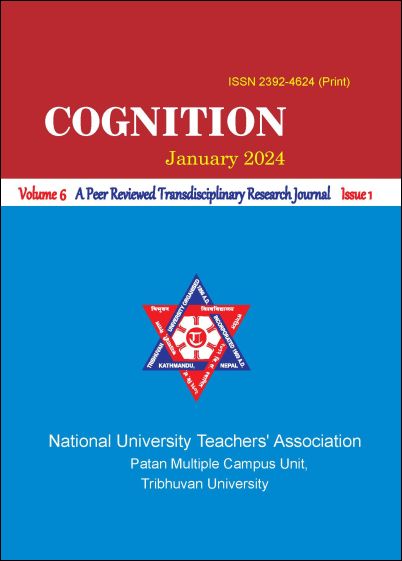Significance Analysis of Poverty, Gender and Human Development in Nepal
DOI:
https://doi.org/10.3126/cognition.v6i1.64451Keywords:
Human development, gender, regional, inequities, malnutrition, significanceAbstract
This article examines in the areas of poverty, gender and human development in Nepal focusing on caste/ethnicity together with regional, rural, and urban disparities. It employs explanatory and analytical methods using secondary data, including peer reviewed papers. Human Development Reports, initiated by Amartya Sen and Mahbub ul Haq in 1990, have been regularly published by the UNDP, featuring the gender and human development for various countries. Nepal has been publishing its Human Development Report (HDR) since 1998.The level of human development is measured by HDI which is found increasing from 0.380 in 1990 to 0.602 in 2022, i.e., 58.42% improvement. Significant progress has been established in the area of human development and gender but significant inequalities still continued among different castes, ethnicities, and regions in the areas of gender and human development. Both urban and rural service centers face challenges like inadequate access to safe drinking water, and child malnutrition, particularly in the far western part of Nepal, highlights the urgency for continued efforts in gender and human development.




